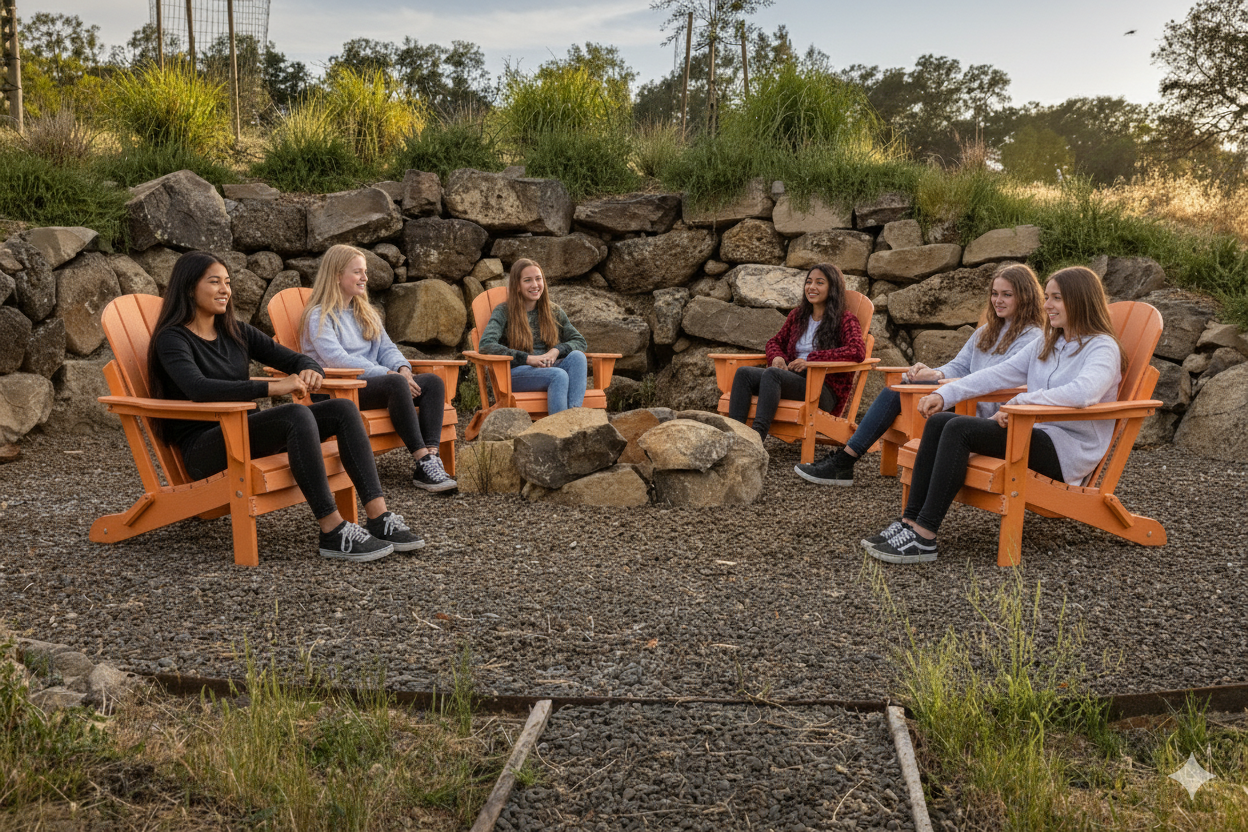Adventure therapy for boys can make treatment more engaging and enjoyable.
If asked to draw a picture of the room in which therapy might take place, teen boys might sketch couches positioned close to chairs. They might spend time drawing boxes of tissue resting on coffee tables, and if they feel inspired, they may even capture the nap of the carpet that covers the floor of rooms like this. It might surprise these boys to learn that some of their most profound learning experiences might take place underneath the open sky or in gymnasiums covered with sporting equipment. There may be no place to lie down in these areas, and tissues might not be required. In short, their experience of therapy might be entirely different than the episodes they expect. In fact, their therapy might include a touch of adventure.
Psychological Underpinnings
Troubled boys entering a treatment program might need to learn many things, including impulse control and anger management.
But they might also need to learn how to handle obstacles that might stand in the way of a goal. Life is adept at handing out these challenges, and it’s not uncommon for adult men to deal with very traumatic episodes, including:
- Divorce
- Death of a loved one
- Loss of employment
- Reduced income
- Poor health
Men with a sense of confidence can face these challenges directly, knowing that they’re capable of handling almost anything that comes in their direction. Even if the difficulty seems immense and impossible, these men might feel capable of taking action almost immediately, and they might never regret the steps they take. It can be difficult for teens to develop this sense of self-confidence. When they’re faced with a challenge, they’re more likely to envision failure, and they might not even be willing to try for a more positive outcome. They may feel certain that the worst will come to pass, regardless of what they might do.
It’s hard to force teens to move past this kind of thinking. It’s a psychological concept that’s difficult to explain, and it might be similarly difficult for teens to understand. If teens enroll in a standard therapy program, their eyes might just glaze over when their therapists attempt to discuss the idea, and they may walk out of the therapy sessions without even learning anything at all.
Adding Spice to Therapy
Common forms of adventure therapy, as mentioned by the Association for Experiential Education, include:
- Games
- Trust activities
- Wilderness activities
- High adventure
Some therapists might ask their clients to climb up a rock wall, using preplaced handholds. Others might ask their clients to take a physically demanding hike. Still others might ask their clients to play on a sports team made up of their family members.
At first glance, it might be difficult to see how these activities might help a troubled teen to improve. Why does climbing a rock wall, for example, help a teen with a drug issue to leave drugs behind? The therapist that runs this program holds the key. This professional doesn’t provide conventional therapy during these sessions, but the therapist might provide the client with feedback both before and after the activity is complete that might make the meaning more clear. The person climbing the rock wall might feel exhilarated at the top, capable of handling anything, and his heart might be filled with joy and a sense of accomplishment. These might be feelings the teen had only previously accessed with the help of drugs. The therapist could remind the teen of that fact, and perhaps, the teen might be more likely to resist drugs in the future.
Teens with trust issues might benefit from seemingly fun, harmless games. In one such game, the teen might be blindfolded while a member of that teen’s family verbally guides that teen through a room scattered with objects. The teen might learn that the family member really is trustworthy, and that leaning on others really is necessary. The two might also feel closer and connected at the end of an exercise like this.
Adventure therapy that takes place outside might also hold specific benefits for adolescent boys. For example, in a study in the Journal of Experiential Education, researchers found that teens participating in a camping experience felt that the experience was “enjoyable,” allowing them to spend time with others and develop new peer networks. These teens might not find their standard treatment programs fun at all, and they might be desperate for these programs to be complete so they can return to a life of leisure, but the adventure therapy might keep them involved and engaged.
Adventure therapy can also provide teens with a sense of accomplishment and a feeling of self-confidence.
When they were told they’d climb a rock wall or cross a river in a kayak, they may have felt as though the task was impossible. Even so, when the session was complete, they tackled that task and made it work. They might feel similarly capable of handling later challenges, all because of one transformative adventure.
Safety Concerns
Parents reading about adventure therapy programs might reasonably become concerned about the health and safety of their children. After all, blindfolded games, rock climbing and camping might be just the sorts of activities they’ve prohibited for their children in the hope of keeping them safe from harm. The idea of sending children into environments in which they participate in these activities might fill parents with fear.
It’s important to remember that therapists are always in charge when adventure therapies are underway.
The therapist can ensure that the child is safe, and most have extensive experience in handling any problem that might arise during a therapy session. The experience is designed to be safe, and a therapist is there to ensure that all goes as planned. Research also suggests that adventure therapy is safe for those who participate.
In a study in the Journal of Therapeutic Schools and Programs, researchers studied the safety profiles of this kind of therapy, and then compared the injuries they saw with the injuries teens might get on an average day as they did average things. In the end, researchers found that participating in adventure therapy was safer than playing football. In addition, researchers found that those who got adventure therapy were three times less likely to visit the emergency room than they would be if they stayed home. Studies like this make the safety of this kind of therapy remarkably clear, and it should put the minds of worried parents at ease.
Finding Success
Even though adventure therapy might be considered safe, parents might still be resistant to sign their children up for a treatment that seems so unusual, unless they have some sort of proof that the therapy has the ability to bring about big changes in those they love.
Thankfully, a wealth of research suggests that adventure therapy really can be helpful for adolescents in need.
Studies like this tend to focus on just one type of therapy, however, rather than looking at adventure therapy as a whole. Using a tight focus like this allows researchers to control for variables and really make connections that make sense. This article will do the same, and the research shown here will pertain to adventure therapy held outdoors.
Adventure therapy programs that allow adolescents to leave the inside of a building and experience the beauty of nature are often appealing to boys, and many of these young people have vivid and positive memories of camping trips, hiking excursions and other adventures. In adventure therapy that takes place outdoors, therapists hope to build upon those positive memories and provide teens with new lessons and new opportunities. In a study of the effectiveness of this kind of therapy, conducted in Australia, researchers found that integrating adventure therapy into a conventional treatment program for mental illness resulted in improvements in a variety of areas, including:
- Self-esteem
- Educational achievement
- Social skills
- Family functioning
That’s a detailed laundry list of benefits, and while it’s possible that teens got some of this help from the standard treatment programs they were also participating in, it’s also likely that much of the help came through the adventures they had.
An interesting study in the Journal of Experiential Education took a different approach and just looked at the success rates of those who got adventure therapy when compared to those who did not. Here, researchers found that those who got experiential care were 62 percent better off, when compared to those who did not. It’s hard to know how researchers came to this precise figure, but it is clear that this form of therapy at least has the potential to make life better. This might be all the information that some skeptical parents need in order to change their minds.
Getting Started
Parents who want to add adventure therapy into the treatment programs for their teen boys do need to perform a bit of homework. For example, they should ensure that the practitioners of the program individualize the care provided based on the needs of the client. Not all teen boys need to go camping, for example, and not all teens will benefit from climbing a rock wall. The therapies provided should be chosen based on the lesson the teen needs to learn, and the therapist should be able to explain to parents why a specific therapy has been chosen, and what it’s designed to do.
It’s also best for parents to ensure that adventure therapy is provided in the context of a larger treatment program. It’s a valuable intervention, but it’s not designed to work as standalone care. Instead, it should be integrated into a larger treatment program involving therapy, medications and supervision. Just throwing a child into adventure isn’t as helpful as using adventure in a treatment program in a deliberate manner.
Parents should also ensure that the facility they choose has qualified practitioners involved in each step of the adventure therapy process. Teen boys shouldn’t be expected to handle these tasks on their own, and therapy isn’t helpful unless a therapist is firmly in charge of the process. This is something parents should ensure is in place before they sign their children up for care.
At Muir Wood, we use a variety of different adventure therapies to reach our teens, and we are confident that we can answer any questions a parent might have and put that parent’s mind at ease. For example, we do provide our clients with customized treatment programs based on their needs, so our clients are never forced into therapies that might not benefit them. We also provide our clients with trained staff during their adventures, and each step a teen makes is supervised. Our patient, science-based, reasonable approach could be just the thing your teen needs in order to get back on track. Please call us to find out more.









